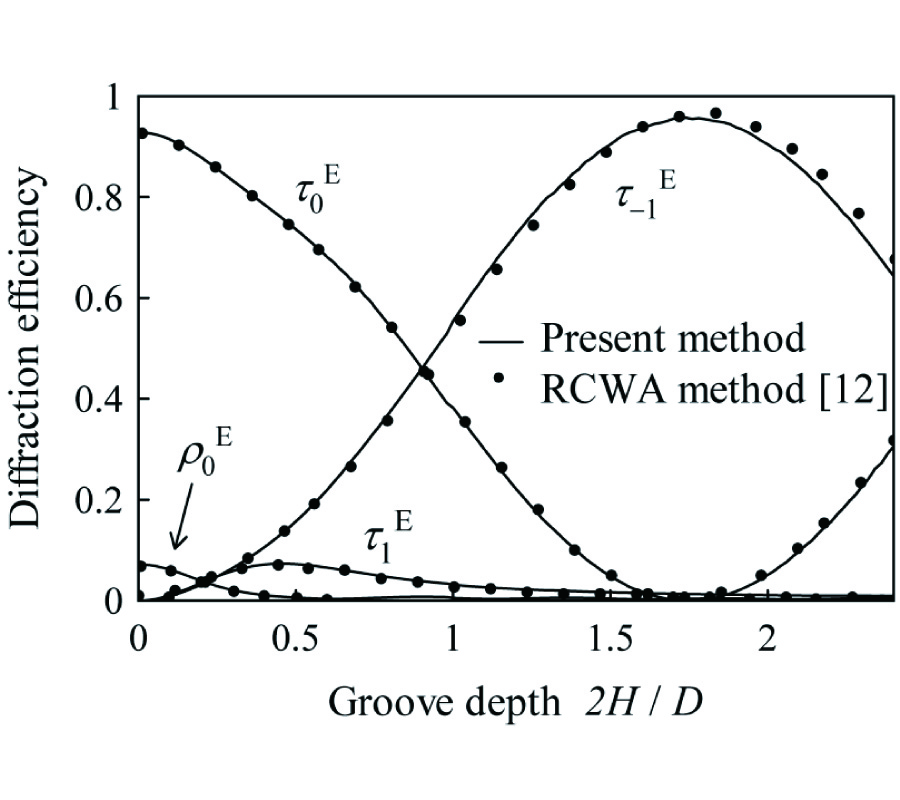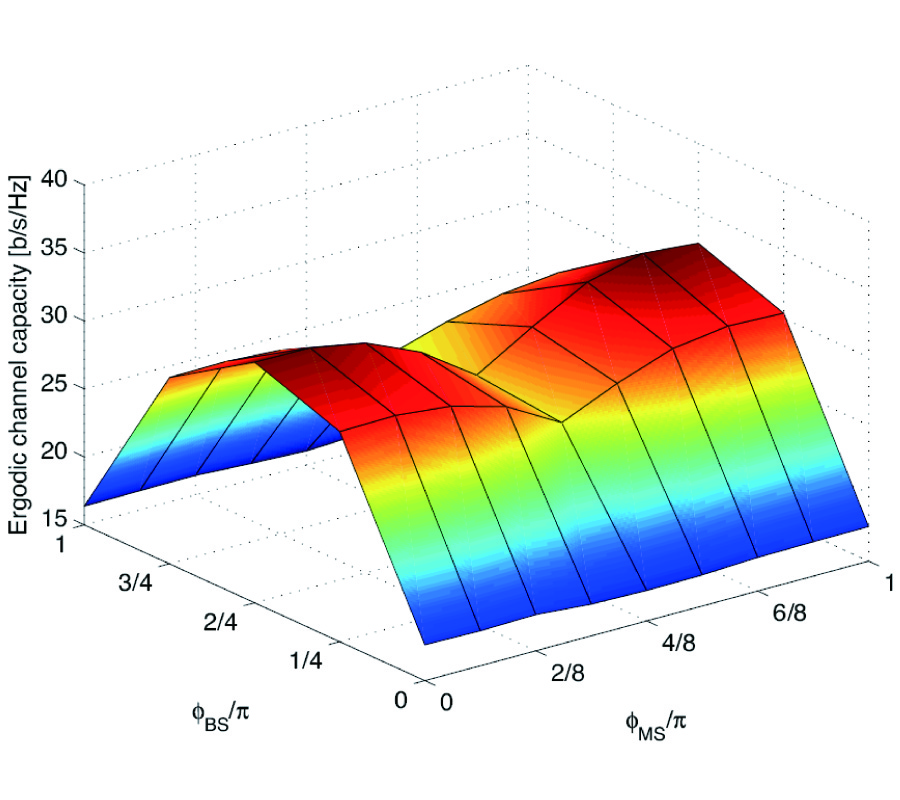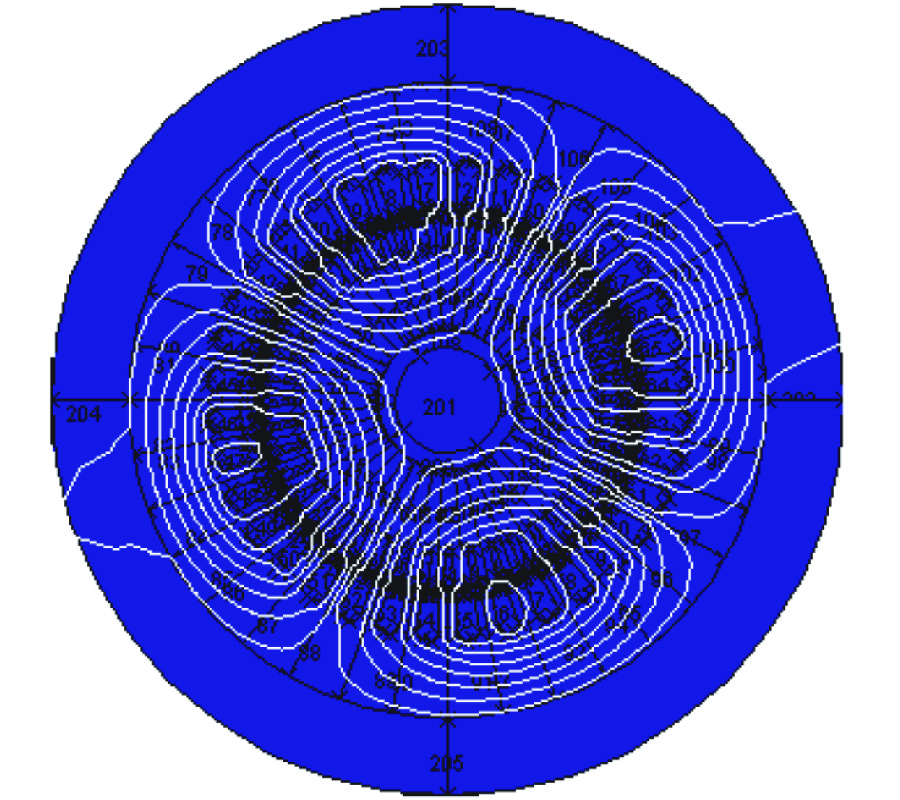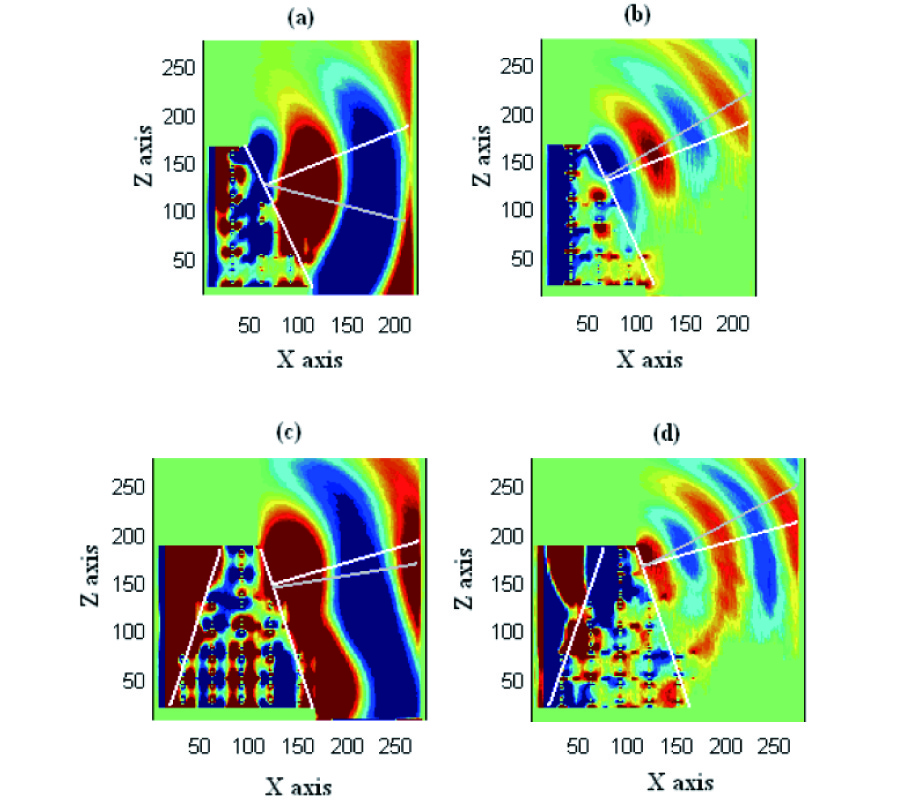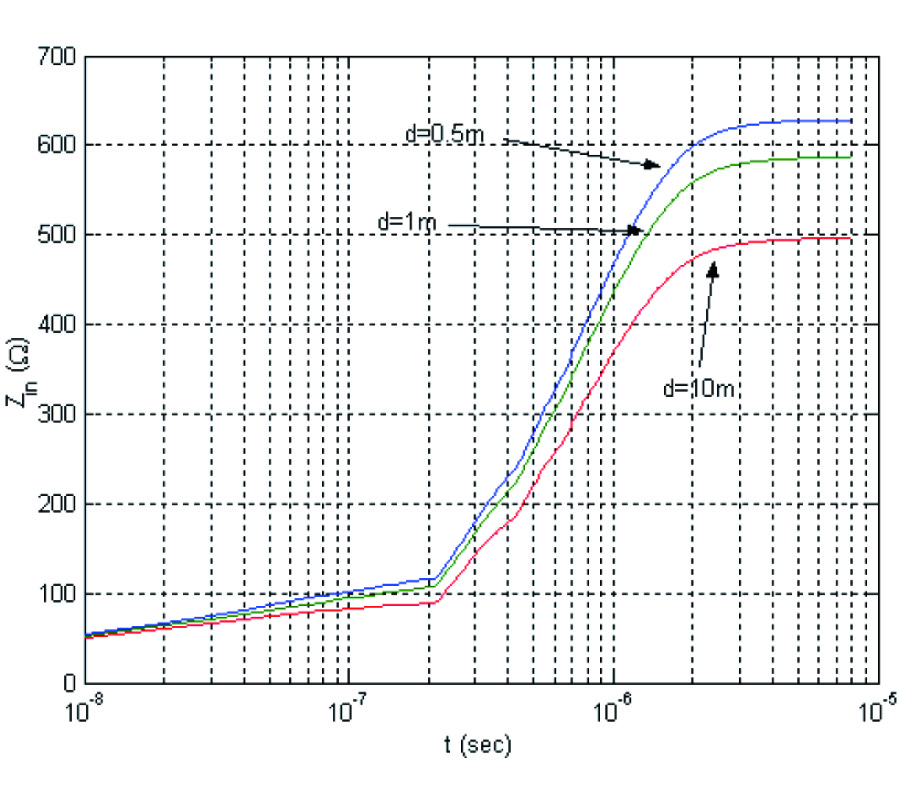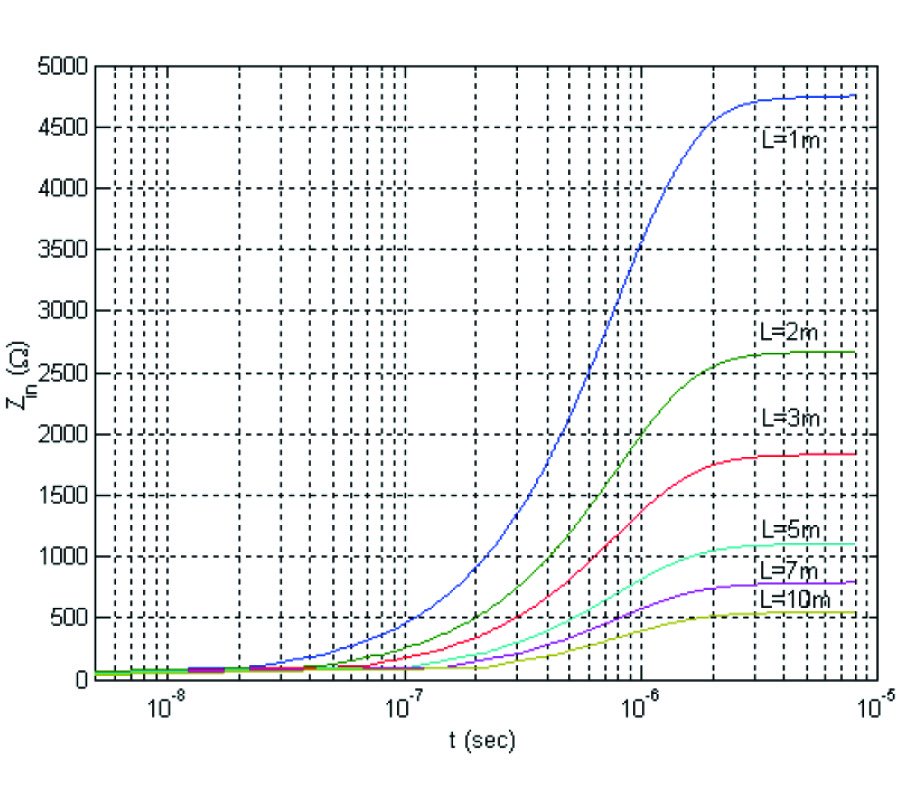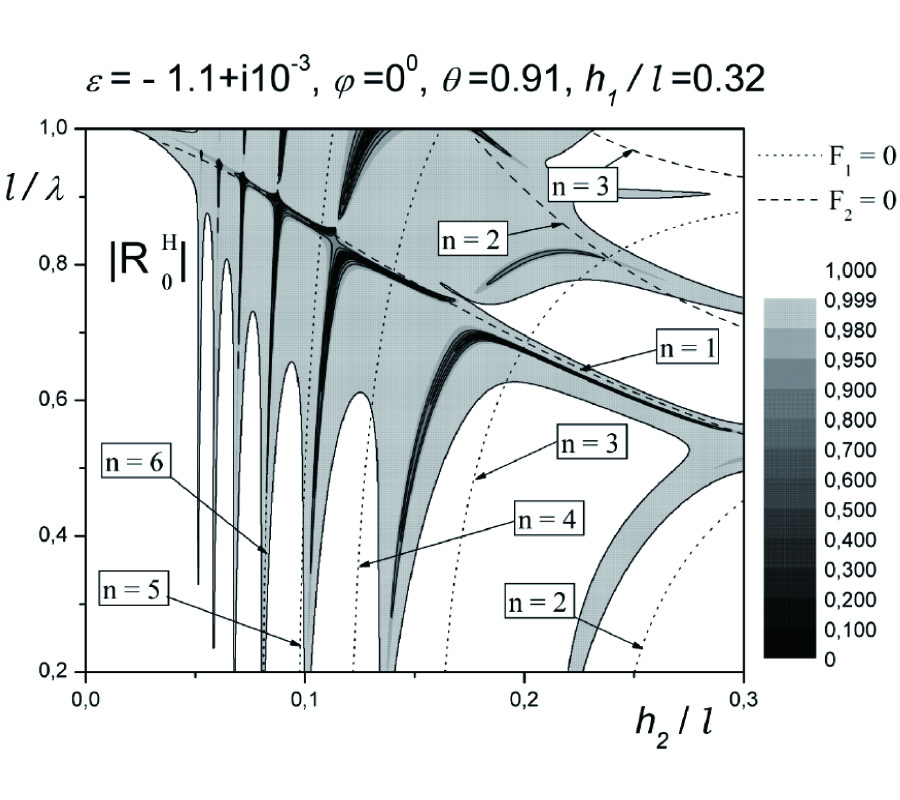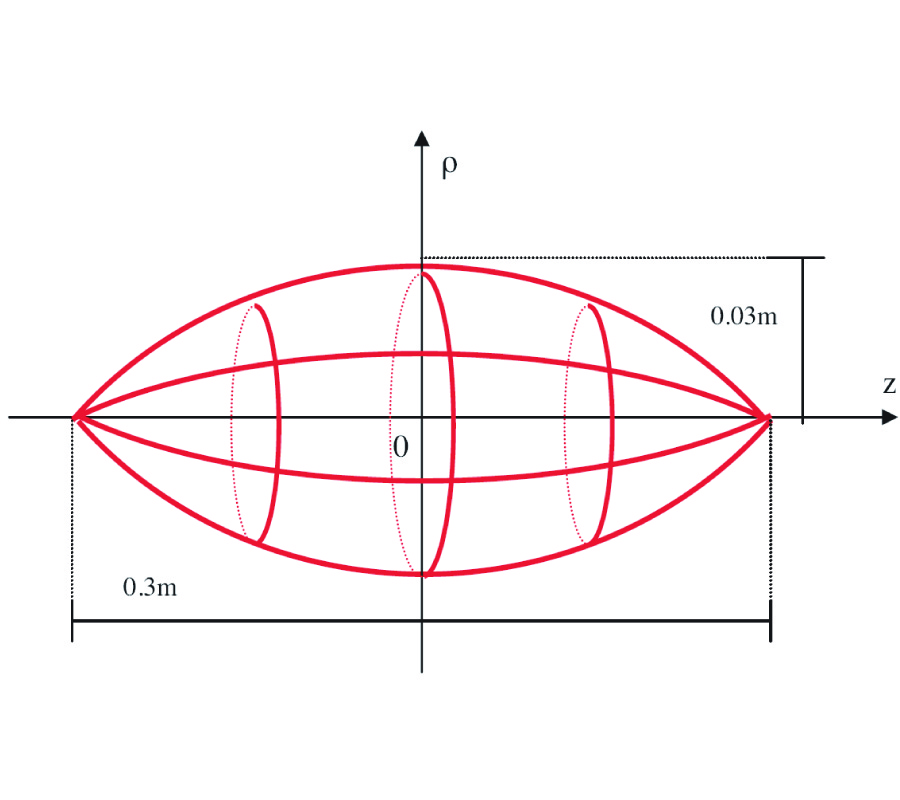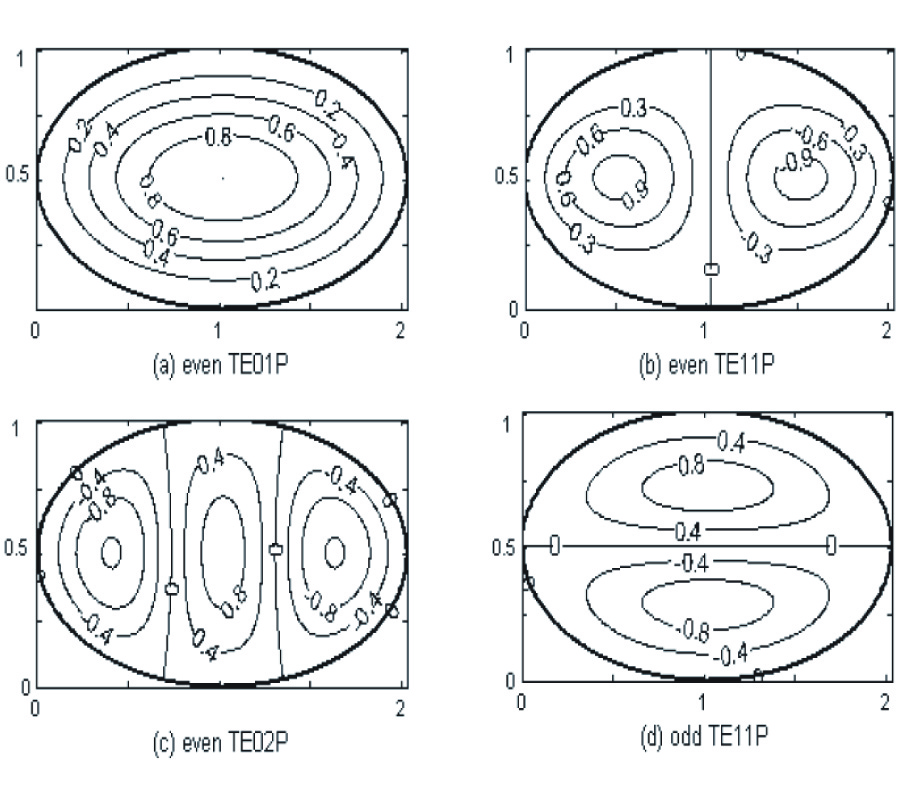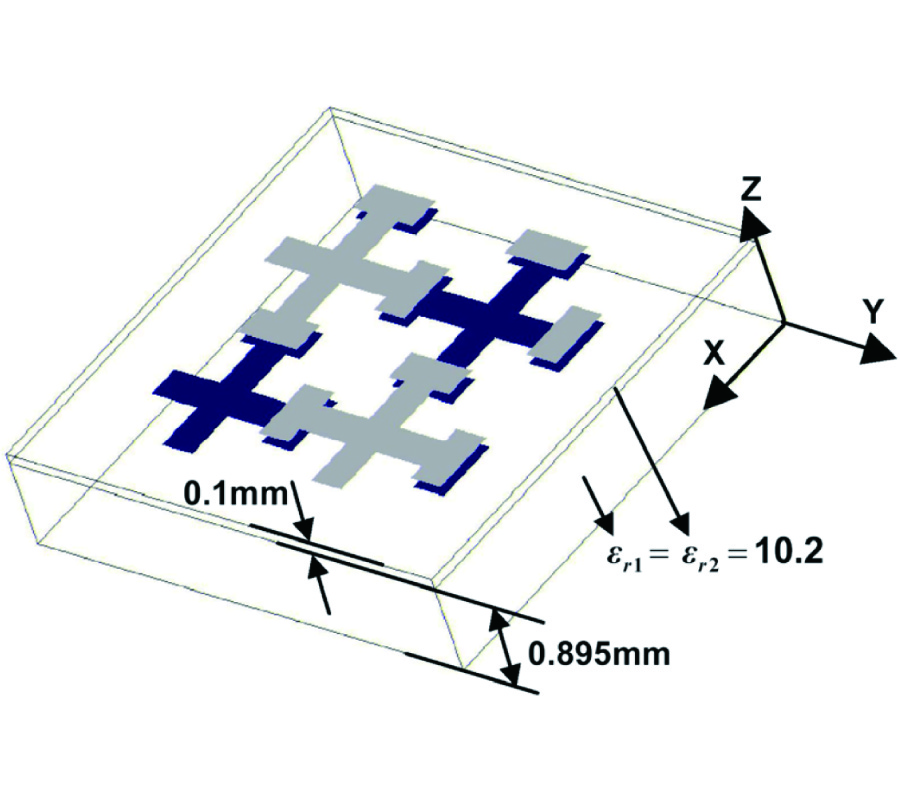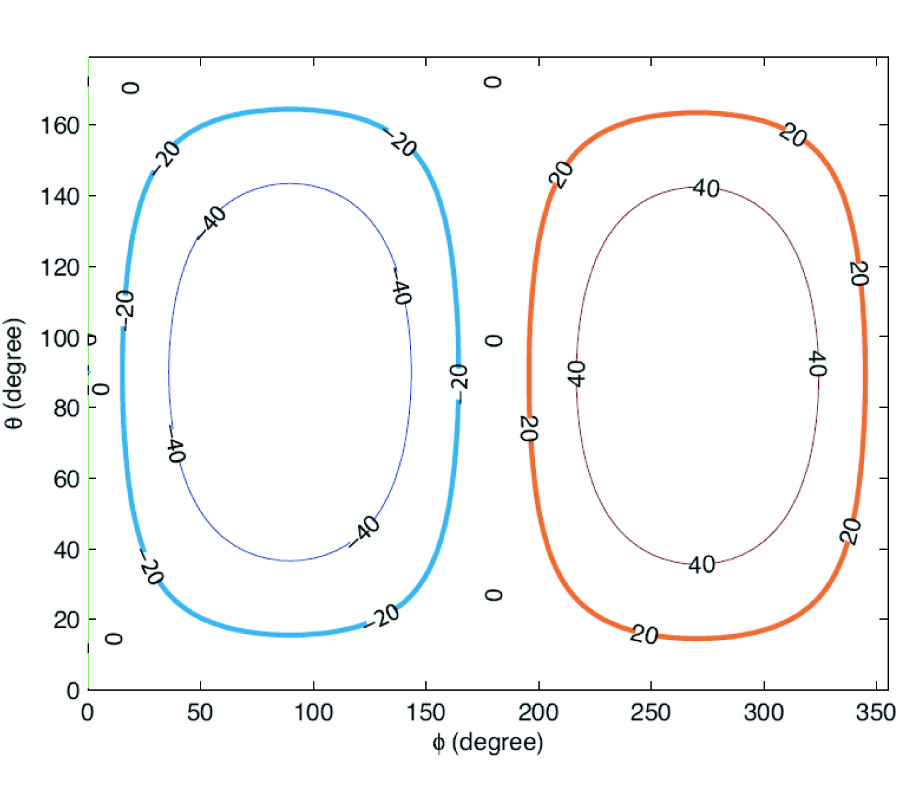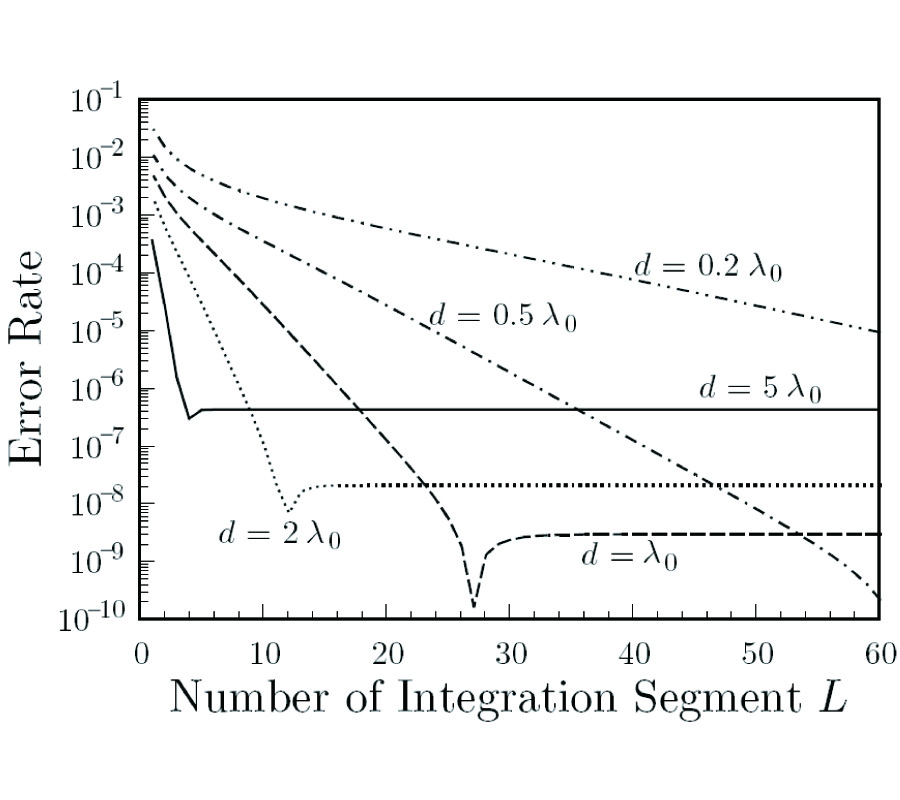A Combination of Up- and Down-Going Floquet Modal Functions Used to Describe the Field Inside Grooves of a Deep Grating
Michitoshi Ohtsu
,
Yoichi Okuno
,
Akira Matsushima
and
Taikei Suyama
An effective computational method based on a conventional modal-expansion approach is presented for solving the problem of diffraction by a deep grating. The groove depth can be the same as or a little more than the grating period. The material can be a perfect conductor, a dielectric, or a metal. The method is based on Yasuura's modal expansion, which is known as a least-squares boundary residual method or a modified Rayleigh method. The feature of the present method is that: (1) The semi-infinite region U over the grating surface is divided into an upper half plane U0 and a groove region UG by a fictitious boundary (a horizontal line); (2) The latter is further divided into shallow horizontal layers U1, U2, ···, UQ again by fictitious boundaries; (3) An approximate solution in U0 is defined in a usual manner, i.e., a finite summation of up-going Floquet modal functions with unknown coefficients, while the solutions in Uq (q = 1, 2, ···, Q) include not only the up-going but also the down-going modal functions; (4) If the grating is made of a dielectric or a metal, the semi-infinite region L below the surface is partitioned similarly into L0, L1, ···, LQ, and approximate solutions are defined in each region; (5) A huge-sized least squares problem that appears in finding the modal coefficients is solved by the QR decomposition accompanied by sequential accumulation. The method of solution for a grating made of a perfect conductor is described in the text. The method for dielectric gratings can be found in an appendix. Numerical examples include the results for perfectly conducting and dielectric gratings.

